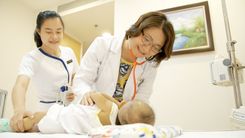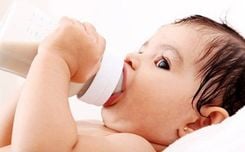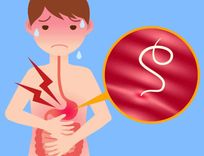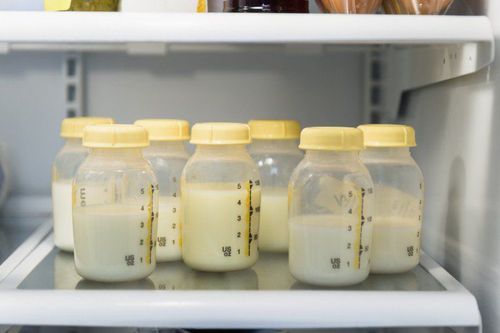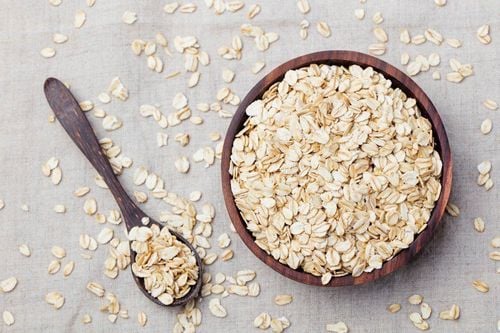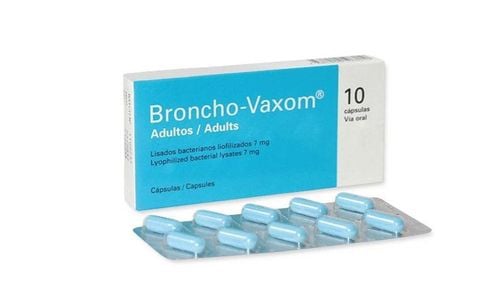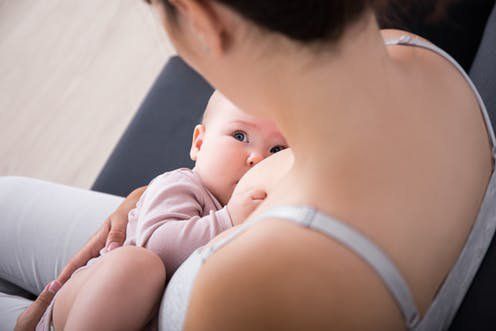This article is professionally reviewed by pediatric and neonatal doctors from the Department of Pediatrics - Neonatology, Vinmec International General Hospital, Hai Phong.
Due to their weaker immune systems, children are highly susceptible to respiratory diseases. However, many parents struggle to differentiate between common respiratory illnesses such as pneumonia, cold-induced cough, and whooping cough. This can lead to serious consequences in the treatment of diseases.
Here are the key characteristics to help parents distinguish between pneumonia, cold-induced cough, and whooping cough in children:
1. Pneumonia
Children with pneumonia often exhibit the following symptoms:
• Rapid breathing is the most reliable diagnostic sign of pneumonia. According to WHO criteria, rapid breathing in children under 5 is defined as:
• 60 breaths/min or more for children under 2 months old
• 50 breaths/min or more for children aged 2-12 months
• 40 breaths/min or more for children aged 1-5 years
Parents or caregivers can count the child’s breaths while they are resting or sleeping. Count for one full minute, repeating 2-3 times for accuracy.
• Chest indrawing is another diagnostic sign of pneumonia. Observe the lower third of the chest for inward movement during inhalation. Note that soft tissue retractions between ribs or above the clavicles are not classified as chest indrawing. For children under 2 months, mild chest indrawing may not be significant due to the natural softness of their chests. Only marked chest indrawing is meaningful for diagnosing pneumonia.
• High fever and wheezing may occur in older children with Mycoplasma pneumonia. However, this symptom can be confused with asthma without a chest X-ray. Additional signs like nasal flaring, grunting, poor feeding, irritability, and abnormal lung sounds depend on the child’s age and the severity of the pneumonia.
• Symptoms like poor feeding, grunting, or central cyanosis may indicate oxygen deficiency, but they are neither highly sensitive nor specific.

2. Cold-induced cough
Cold-induced cough is often accompanied by: runny nose, sore throat, watery eyes, and loss of appetite. This is typically a mild condition lasting 1-2 weeks, with the peak contagious phase in the first few days. Young children may catch colds 6-10 times a year. Since colds are caused by viruses, antibiotics are ineffective.
If your child is too young to blow their nose, use saline nasal drops and a suction bulb to clear mucus. A humidifier or warm baths can also help. Always consult a doctor before giving your child any over-the-counter medication. Confirm whether your child’s age allows them to safely use lozenges or cough medicine.
3. Whooping cough

Whooping cough is highly contagious, the bacteria spreads through droplets and infects nearly all unvaccinated individuals exposed. Whooping cough is part of the national immunization schedule, with vaccines administered at 2, 3, and 4 months of age, followed by a booster at 18 months.
The bacteria attack respiratory mucosa, causing severe inflammation and narrowing of airways. Unvaccinated children are at high risk, especially infants. Infants under 6 months are not yet strong enough, so the characteristic whooping sound of whooping cough may not be obvious, making it harder for parents to recognize the condition. Instead, when a whooping cough episode is severe enough, the baby may vomit, temporarily stop breathing, and their lips may turn bluish due to insufficient oxygen intake.
Whooping cough often has 3 stages:
+ Early stage (1-2 weeks): The child may experience a persistent cough lasting 1-2 weeks, accompanied by mild upper respiratory infection symptoms such as a runny nose and mild coughing (mostly at night). At this stage, it is challenging to differentiate whooping cough from other illnesses, as its symptoms resemble those of the common cold or typical respiratory infections.
+ Paroxysmal stage occurs during the next 1-2 weeks: The child begins to cough more frequently, with prolonged and intense coughing fits that can lead to choking. After these episodes, the child often appears flushed or even bluish due to insufficient oxygen intake from excessive coughing, which can eventually result in respiratory distress. The prolonged and severe coughing also leaves the child fatigued, exhausted, and unwilling to eat, leading to malnutrition.
+ The third stage of whooping cough is the recovery phase, during which the child's coughing episodes gradually become shorter and less frequent.
Treatment of whooping cough:
Infants under 6 months require hospitalization for monitoring and treatment. Older children without complications may be treated with antibiotics (10-14 days). Do not use antihistamines, expectorants, sedatives, or cough suppressants without medical advice due to its low efficiency and side effects.
Infants with whooping cough can be treated with with Erythromycin at a dose of 30–50 mg/kg/day, divided into four doses, or Cotrimoxazole at 30–50 mg/kg/day. Additionally, Salbutamol at 0.2 mg/kg/day and Prednisolone at 1–2 mg/kg/day can be administered. Note: Cotrimoxazole should not be given to newborns.
Besides medications, there are several care tips should be noted:
• Use saline drops to clean the child’s nose and mouth. Maintain good hygiene and keep the child warm.
• For infants, breast milk is the best source of nutrition. Older children should eat nutrient-rich, easily digestible foods in small, frequent meals. Ensure adequate hydration to prevent dehydration. For older children, ensure a nutritious diet to prevent physical weakness and boost their immune system, aiding quicker recovery. Parents should provide easily digestible food, divide main meals into smaller portions, and encourage frequent meals throughout the day to make eating easier for the child. Additionally, do not forget to keep them hydrated by giving plenty of water to prevent dehydration.
• Avoid exposing infants with whooping cough to smoke from stoves or cigarettes, as this can worsen the condition. Maintain a clean and well-ventilated environment around the baby.
• Expectant mothers can get vaccinated against diphtheria, whooping cough, and tetanus to protect their babies under two months of age from these illnesses.
Since whooping cough is highly contagious, isolate affected children and limit their contact with others. Caregivers should take preventive antibiotics to minimize risk.
For optimal health development, children need a balanced and adequate diet. Poor nutrition can hinder physical and mental development.
Improper eating habits in children can lead to a deficiency in essential micronutrients, resulting in poor appetite, slow growth, and reduced nutrient absorption. If these signs are observed, parents should consider supplementing their child's diet with products containing lysine, essential vitamins, and minerals like zinc, chromium, selenium, and B vitamins. These nutrients help meet the nutritional needs of children while also supporting digestion, enhancing nutrient absorption, improving appetite, and encouraging better eating habits.
